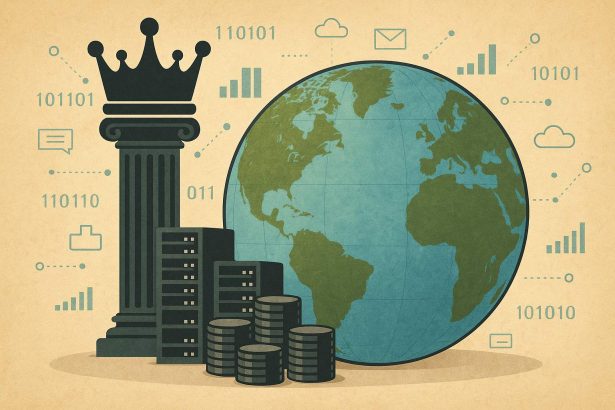Cameras that say they can detect if you are lying. Customer-service tools that claim to know when you are frustrated.
Classroom software that evaluates whether students are “engaged.”
All of these systems rely on one controversial field: AI emotion recognition.
- What is AI emotion recognition?
- The promise: smarter systems that respond to how you feel
- Can a machine really “see” emotions?
- The accuracy problem
- From understanding to judgment
- Emotion recognition as the next layer of surveillance
- Bias, discrimination, and cultural blindness
- The ethical debate: should we build this at all?
- Regulation: where the law is starting to react
- What a more responsible path could look like
- Lessons from Cambridge Analytica: emotions as a vector of influence
- Emotions should not be just another data point
After the Cambridge Analytica scandal revealed how data could be used to influence what people think and feel,
a new question emerged: what happens when technology doesn’t just predict behavior, but claims to see inside your emotions?
What is AI emotion recognition?
AI emotion recognition refers to systems that attempt to infer a person’s emotional state from observable signals such as:
- Facial expressions (smiles, frowns, eye movements)
- Voice tone and pitch (stress, excitement, hesitation)
- Body language (posture, gestures, restless movement)
- Physiological signals (heart rate, skin conductance, micro-changes in the face)
In theory, these systems “read” emotional cues and classify them into categories like happy, sad, angry, fearful, bored, or engaged.
In practice, they often rely on simplified psychological models and highly context-dependent data — which raises serious questions
about accuracy and fairness.
The promise: smarter systems that respond to how you feel
The vision sold by many companies is seductive.
Imagine:
- Customer support chatbots that calm down when they detect frustration
- Learning platforms that adapt when students are confused or overwhelmed
- Cars that sense driver fatigue and trigger safety alerts
- Mental-health tools that flag signs of emotional distress
On paper, AI that understands emotions sounds like a step toward more humane technology.
Systems would no longer react only to clicks, but to mood and context.
The problem is that emotions are not simple, and treating them as neat categories can be misleading — or dangerous.
Can a machine really “see” emotions?
Emotion recognition systems often rely on the idea that certain facial expressions correspond to specific emotions everywhere in the world.
For example: a smile means happiness, a frown means anger, a furrowed brow means confusion.
But decades of psychological research suggest that emotions are:
- Deeply shaped by culture and social context
- Expressed differently from one person to another
- Often masked, exaggerated, or hidden for social reasons
A “neutral” face can be interpreted as unfriendly, bored, or respectful, depending on the context.
A raised voice can signal anger — or enthusiasm.
When AI systems reduce this complexity to fixed labels, they risk turning rich human experience into
crude predictions.
The accuracy problem
Most emotion-recognition models are trained on curated datasets where:
- Subjects are often posed or acting emotions on command
- Lighting, framing, and angles are controlled
- Demographics may not reflect global diversity
When those systems are deployed in the real world — in crowded classrooms, noisy call centers, or
surveillance footage — their performance can collapse.
Yet the scores they generate (for example, “engagement: 72%” or “anger: 18%”) are often treated as objective measurements.
This gap between perceived objectivity and actual uncertainty creates a dangerous illusion of accuracy.
From understanding to judgment
The real risk of emotion recognition is not just misclassification — it is how the outputs are used.
Once a system assigns an emotional label to someone, that label can become a basis for:
- Evaluating an employee’s performance
- Grading a student’s attention in class
- Screening job candidates for “attitude” or “cultural fit”
- Flagging individuals as “suspicious” in security footage
At that point, the AI is no longer simply observing; it is participating in decision-making processes.
The jump from “we think this person looks frustrated” to “this person is a risk” can be alarmingly short
in high-pressure environments.
Emotion recognition as the next layer of surveillance
After Cambridge Analytica, the world learned that psychological traits could be inferred from digital traces —
likes, shares, and online behaviors.
AI emotion recognition goes one step further: it attempts to monitor psychological states in real time.
Imagine:
- Retail stores analyzing shoppers’ facial expressions to optimize product placement
- Workplaces monitoring employees’ faces for signs of “low motivation”
- Political campaigns testing which images trigger the strongest emotional reaction in focus groups
This turns emotion into another data point in the surveillance economy — an extension of what some researchers
call surveillance capitalism.
Instead of only tracking what you do, systems now attempt to track how you feel.
Bias, discrimination, and cultural blindness
Emotion recognition systems inherit biases from the data they are built on.
If most training data comes from a narrow demographic group, the model may:
- Misread the expressions of people from different cultures
- Misinterpret neurodivergent behavior as “disengagement” or “anger”
- Flag certain facial features or skin tones more frequently as “suspicious”
In high-stakes environments — policing, airports, border control, hiring — these errors can reinforce
existing inequalities.
People already subject to disproportionate scrutiny may end up being judged by tools that fundamentally
misunderstand them.
The ethical debate: should we build this at all?
A growing number of researchers and human-rights organizations argue that emotion recognition
should not just be regulated — it should be paused or banned in certain contexts.
Their arguments include:
- There is no scientific consensus that emotions can be reliably inferred from facial expressions alone.
- The technology invites abuse in authoritarian contexts and high-surveillance environments.
- The benefits are often vague, while the risks to dignity, privacy, and fairness are concrete.
Even some companies that once invested heavily in emotion AI have pulled back, quietly retiring
products or narrowing their use cases after public criticism.
Regulation: where the law is starting to react
Around the world, regulators are beginning to pay attention:
- Some draft AI laws classify emotion recognition as a high-risk technology.
- Certain jurisdictions are considering bans on its use in schools, workplaces, or law enforcement.
- Data-protection authorities are questioning whether emotional data counts as a sensitive category.
The legal conversation is still evolving, but one principle is gaining traction:
just because we can attempt to read emotions with AI does not mean we should deploy it everywhere.
What a more responsible path could look like
A cautious, ethics-first approach to emotion recognition might include:
- Strict bans on emotion AI in policing, border control, and other coercive environments
- Full transparency wherever it is used: clear notices, opt-in consent, and accessible explanations
- Independent audits testing both accuracy and disparate impact across groups
- Strong data-protection rules limiting retention and secondary use of emotional data
In addition, designers and policymakers should ask a simple question before deploying such systems:
Is this application truly necessary — or is it surveillance disguised as innovation?
Lessons from Cambridge Analytica: emotions as a vector of influence
The Cambridge Analytica case taught the world that emotional vulnerabilities could be exploited at scale
using data and targeted content.
AI emotion recognition raises the stakes by promising something even more intrusive: real-time insight into
people’s feelings.
In the wrong hands, this could enable:
-
- Hyper-precise political messaging tailored to emotional states
- Manipulative advertising triggered at moments of stress or insecurity
- Workplace monitoring that punishes “negative” emotional displays
This is not science fiction; it is a logical continuation of the patterns exposed in the Cambridge Analytica era —
unless clear ethical and legal boundaries are drawn.
Emotions should not be just another data point
AI emotion recognition sits at the intersection of ambition and overreach.
It promises empathy, but risks control.
It claims insight, but often delivers approximation.
Above all, it treats something deeply human — our emotional life — as just another variable to be tracked, predicted,
and monetized.
A more humane digital future may not be one where machines perfectly “read” us,
but one where they respect what they cannot fully understand.
The real question is not whether AI can recognize emotions, but whether it is ethical to turn our feelings into data at all.







